What’s that you say? You want to travel overland from Mwanza, Tanzania to Kigali, Rwanda but you’re having trouble finding information on the journey? Look no farther: Here is how to get from Mwanza to Kigali in 14 (not-so-easy) steps.1
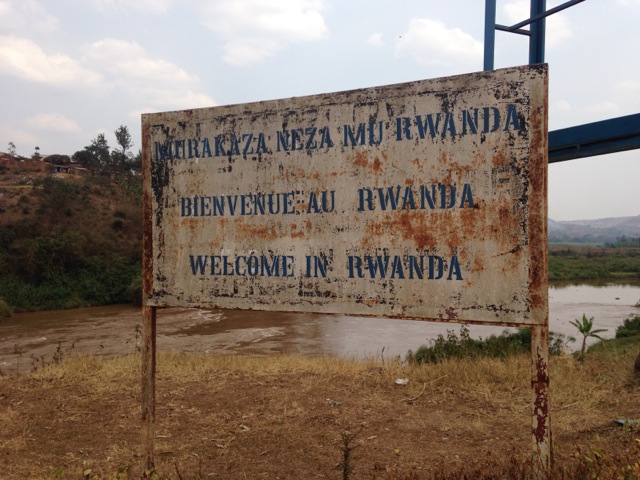
What’s that you say? You want to travel overland from Mwanza, Tanzania to Kigali, Rwanda but you’re having trouble finding information on the journey? Look no farther: Here is how to get from Mwanza to Kigali in 14 (not-so-easy) steps.1

After checking out the rock paintings in Kondoa, we planned to head northwest to Mwanza, Tanzania’s second largest city, for a stopover on our way to Rwanda.
It was another early morning when we left Kondoa. Unfortunately, the best (least worst?) routing to Mwanza from Kondoa required us to first backtrack to Dodoma. Unsurprisingly, the road back to Dodoma was just as bumpy as it had been on the way up to Kondoa. If anything, the ride was more bumpy because our seats didn’t appear to be permanently attached to the bus – so when we went over a bump, it wasn’t just us flying out of our seats, it was us flying out of our seats with the seats flying along behind us.
We arrived in Dodoma mid-morning, and our plan was to forge on to Mwanza that same afternoon. Our guidebook indicated that Mwanza-bound buses that originated in Dar es Salaam passed through Dodoma around noon, and we set about looking for tickets on one of those buses.1
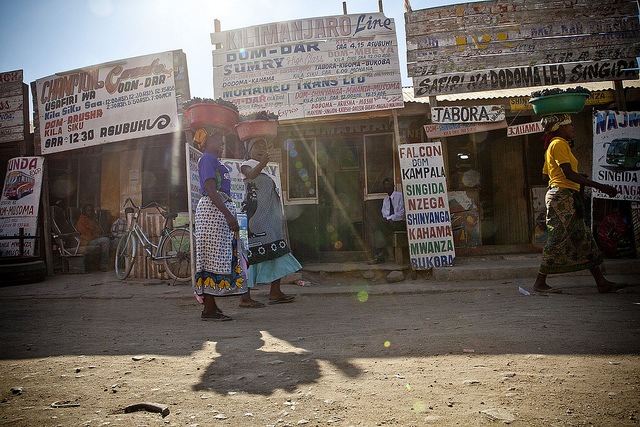
Pop quiz: What is the capital of Tanzania? Dar es Salaam? Nope!1 The correct answer is Dodoma.
Next question: What is there to do in Dodoma? Not much! (Sorry Dodomans, Dodomites?)
After a couple of days in the big city, we left Dar on a late morning bus heading to Dodoma,2 where we arrived just before sunset and spent the night. Our plan was to catch a bus the next morning heading further north to Kondoa and then visit some of the rock paintings in the surrounding area, which have been listed as an UNESCO World Heritage site.3 Continue reading Checking Out the Kondoa Rock Art
We received no shortage of warnings about Dar es Salaam. Like Johannesburg (and many other large African cities), it has something of an unsavory reputation, at least amongst travelers. The warnings we had received in advance of our trip to Jo’burg were largely generalized, stock warnings (“don’t carry unnecessary valuables,” “don’t walk around with a bag,” “don’t walk around at night”) – the warnings we received about Dar, however, were disturbingly specific first-person accounts: a couple who had stayed at Mayoka Village in Nkhata Bay at the same time as us had been robbed by their taxi driver; a group of Peace Corps volunteers we met in Iringa warned us about aggressive thieves at the bus station.
Consequently, we arrived in Dar es Salaam with our guards up. I’m pleased to report that we had no problems whatsoever in Dar. We walked around downtown, used taxis, and rode the pubic minibuses without having a single incident.
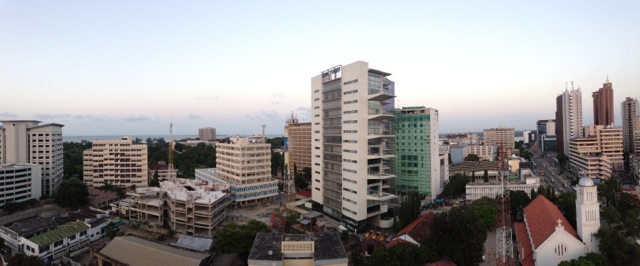
Our visit to Dar was split in two parts (Dar I and Dar II) and sandwiched our trip to Zanzibar.1 Continue reading A Double Visit to Dar es Salaam (Or, a Zanzibar Sandwich)
Although you might not know it from our previous posts, there is more to Zanzibar than Stone Town and spice plantations – including a fascinating forest and a series of gorgeous beaches. When our Kiwi friends suggested renting a car and road-tripping across Unguja (Zanzibar’s main island) to take in the forest and several beaches, we decided to join them!
Jozani National Park, located about 35 kilometers from Stone Town, is the largest remaining area of mature forest in Zanzibar. Most notably, it is home to the Zanzibar red colobus monkey, a rare rain forest species that lives only in Zanzibar.
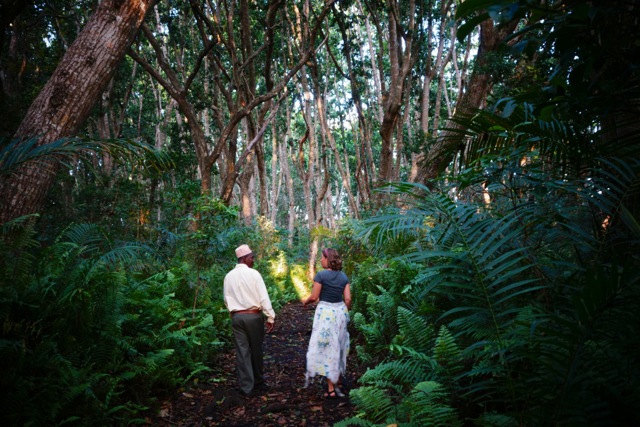
One of the Zanzibar’s most important industries is spice production, and one of the most highly recommended things to do while visiting there is tour a spice plantation. As enthusiastic fans of spices, a spice tour was on our must-do list.
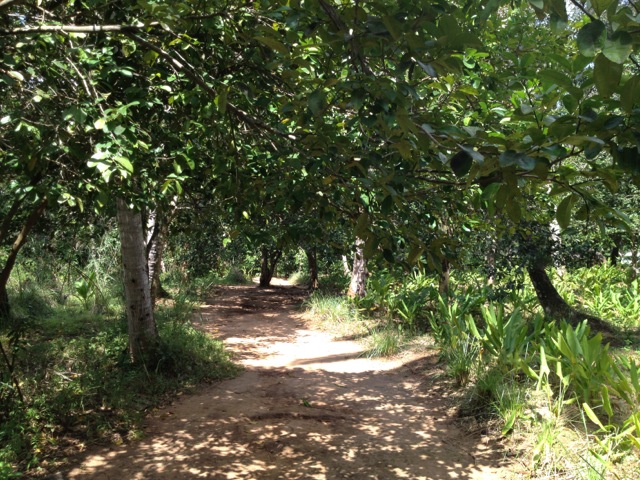
Plenty of people (tour operators, your hotel, random folks on the street) will sell you a spice tour. We chose to go on an inexpensive, full-day group tour organized by Mr. Mitu, a tour operator recommended by our guidebook. We paid for the tour in his office in Stone Town one afternoon, and he gave us a receipt with his phone number on it and told us that someone would pick us up at our hotel the next morning between 9:00 and 9:30 a.m. Continue reading Taking a Spice Tour in Zanzibar (Or, That Time We Were Sort-Of Accidentally Kidnapped)
Programming note: Our next stop after Iringa was technically Dar es Salaam. But we spent less than 24 hours there and later returned, so this blog will tackle our time in Dar as a whole in a future post.
Even while we were on the idyllic shores of Lake Malawi – where life couldn’t have been much better – we were looking forward to visiting Zanzibar. We had heard such enticing things about Zanzibar, and the name alone conjured an exotic aura.
“Zanzibar” is actually the name of the entire archipelago, which consists of two large islands and a number of small ones. The main island is called Unguja, and that is where Zanzibar City, the capital of Zanzibar, is located. Zanzibar City is often generically called Stone Town, but the term “Stone Town” technically refers only to its historic city center.
From Dar, we took the ferry to Zanzibar City. The ferry, called the Kilimanjaro IV, couldn’t have been more different from the Ilala that we had taken across Lake Malawi. For starters, there was no livestock. Other subtle differences included the facts that: (i) the Kilimanjaro IV’s departure time had a basis in reality; (ii) we did not have to disembark the ferry through a combination of dinghy and wading through water; and (iii) we had comfortable seats instead of perching on pipes and coils of rope amongst piles of drying fish.
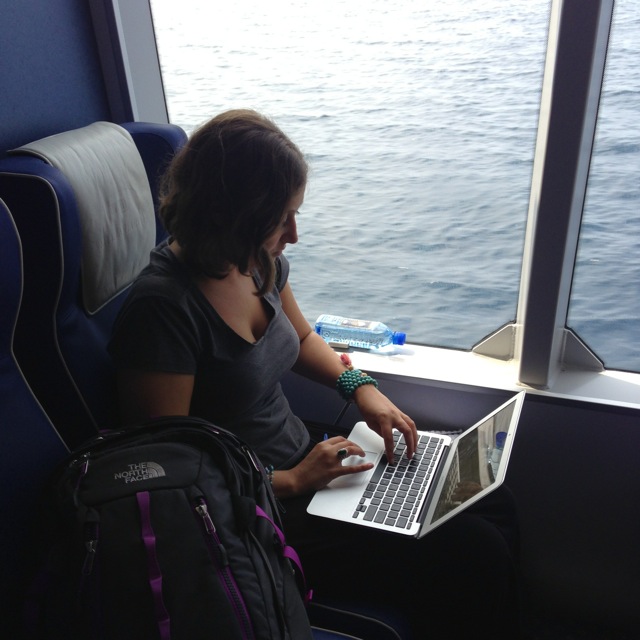
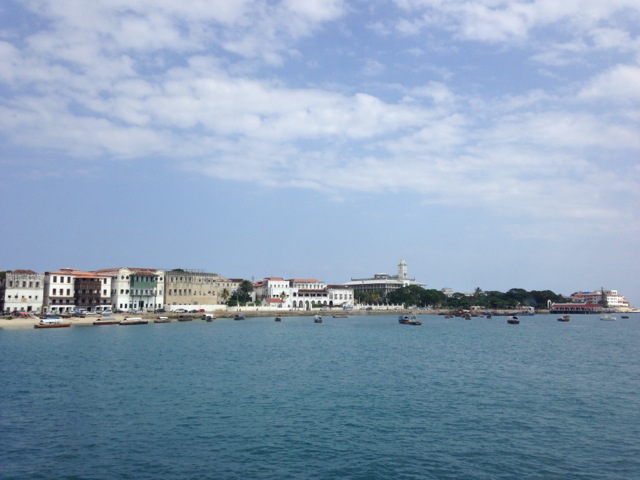
Although some Peace Corps volunteers we would later meet sung the praises of Mbeya, we saw no reason to linger there and headed out the morning after our arrival. One knee-breaking ride on a beer-soaked bus later, we arrived in Iringa, a Tanzanian district capital perched on a bluff.
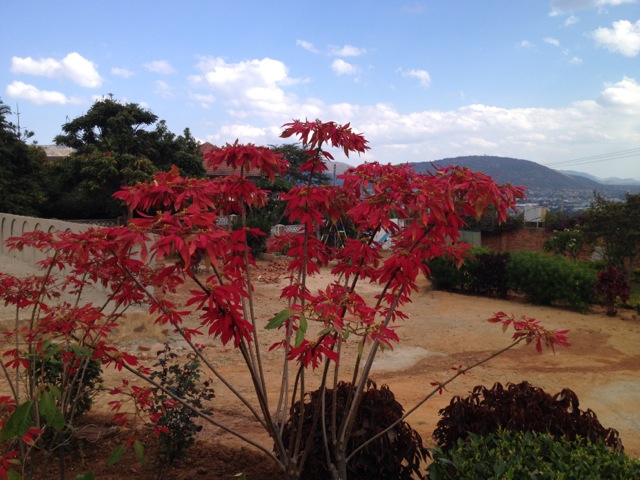
The most popular budget accommodation in town, the Neema Crafts Guest House, recommends that you make a reservation in advance. As with so much of this trip, we weren’t sure exactly when we would be arriving in Iringa (moreover, not yet having sorted a Tanzanian SIM card, we had no means of contact), and so we hadn’t done this. Tired and still a little sick, we approached the reception desk with trepidation. Our luck held, and we got the last room in the place. The room was simple, but bright and clean, and, after months of sleeping basically outdoors1 and/or in dire circumstances, it felt like a palace. Once we discovered that not only did our room have a television, but that The Muppets was just starting on one of the various satellite channels, we didn’t leave our room for the next few hours. Continue reading Taking It Easy In Iringa
Regular readers of this blog know that this adventure has not been about traveling in style. Rather, we’ve been stuck in the middle of near-revolts on minibuses, crammed onto long-distance buses full of cargo, and sold from minibuses to shared taxis like chattel. Luckily, those less-than-comfortable trips must have earned us some good travel karma because our journey from Malawi to Tanzania went surprisingly smoothly.
Pretty much since our arrival in Nkhata Bay, we Marc had been evaluating our options for onward travel. The front-runner of these options was taking a bus that passed through (but did not originate in) Mzuzu just before midnight, arriving in Dar es Salaam the next evening.1 We changed our minds after hearing from new friends who left Nkhata Bay for Tanzania a few days before we did: When the midnight bus arrived in Mzuzu, there were no seats for them, despite the fact that they held tickets for the journey on to Dar,2 and they had to take a taxi all the way to the Tanzanian border and then wait there until it opened in the morning.
Instead of rolling the dice with that bus, we decided to make the trip to Tanzania in separate stages. We started with a 5:00 a.m. taxi to Mzuzu that we shared with the Finnish couple we had met. It was a much more comfortable option than taking a minibus to Mzuzu and it deposited us at the open door of a bus heading north to Karonga just minutes before its scheduled 6:30 a.m. departure.3 You really can’t beat door-to-door service!
In Karonga, we encountered our biggest delay: finding somewhere to exchange Malawian kwachas into U.S. dollars.4 We eventually admitted defeat and commenced the next stage of our journey: a minibus to the Tanzanian border.
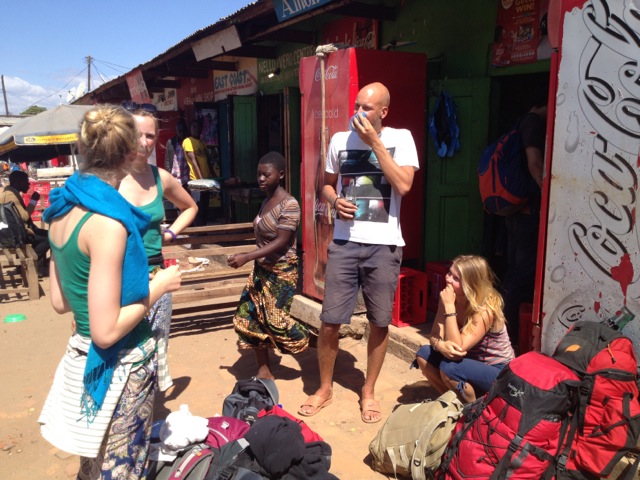
Continue reading Cashing in Our Good Travel Karma to Reach Tanzania
Our apologies for the dearth of blog posts lately. We have been traveling in some remote parts of Uganda, and I have had something of a head cold (stop worrying! I promise it is not ebola), which seemed to take up residence right in the space between the part of my brain that thinks up words and the part of my brain that commands my fingers to type. Good news: the Uganda “Day Nurse/Night Nurse” pill combination1 that I’ve been taking is proving pretty effective in chasing it away.
Anyway, it segues nicely into the next part of our trip: that time we got really sick in Malawi.
Marc and I have been pretty healthy here in Africa. We’ve come down with the odd headache or case of sniffles (and the abovementioned instant cold), but nothing either very serious or inconvenient. A few days into our second stay at Mayoka Village in Nkhata Bay, however, Marc started complaining about feeling achy. I immediately thought malaria.
Allow me to quote Lonely Planet’s section on infectious diseases: “Malaria’s early stages include headaches, fevers, generalised aches and pains, and malaise, which could be mistaken for flu.” Perhaps you remember our post on things we will no longer take for granted, where we showcased the following warning: PRESUME YOU HAVE MALARIA UNTIL PROVEN OTHERWISE. Should I note that this warning was included in an informational pamphlet in our room at Mayoka Village?
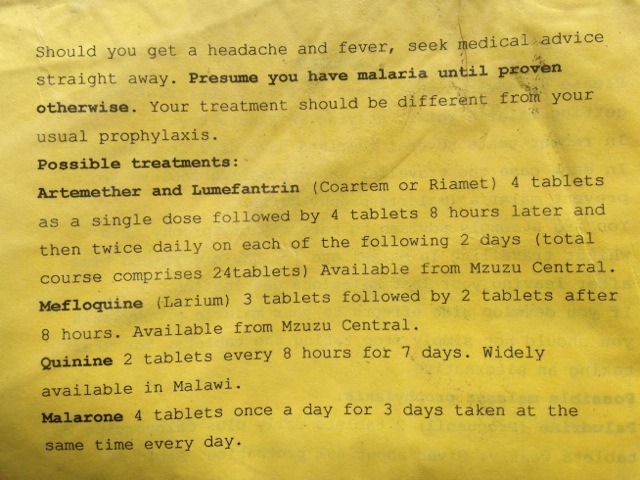
Continue reading That Time Marc Got a Malaria Test in Malawi